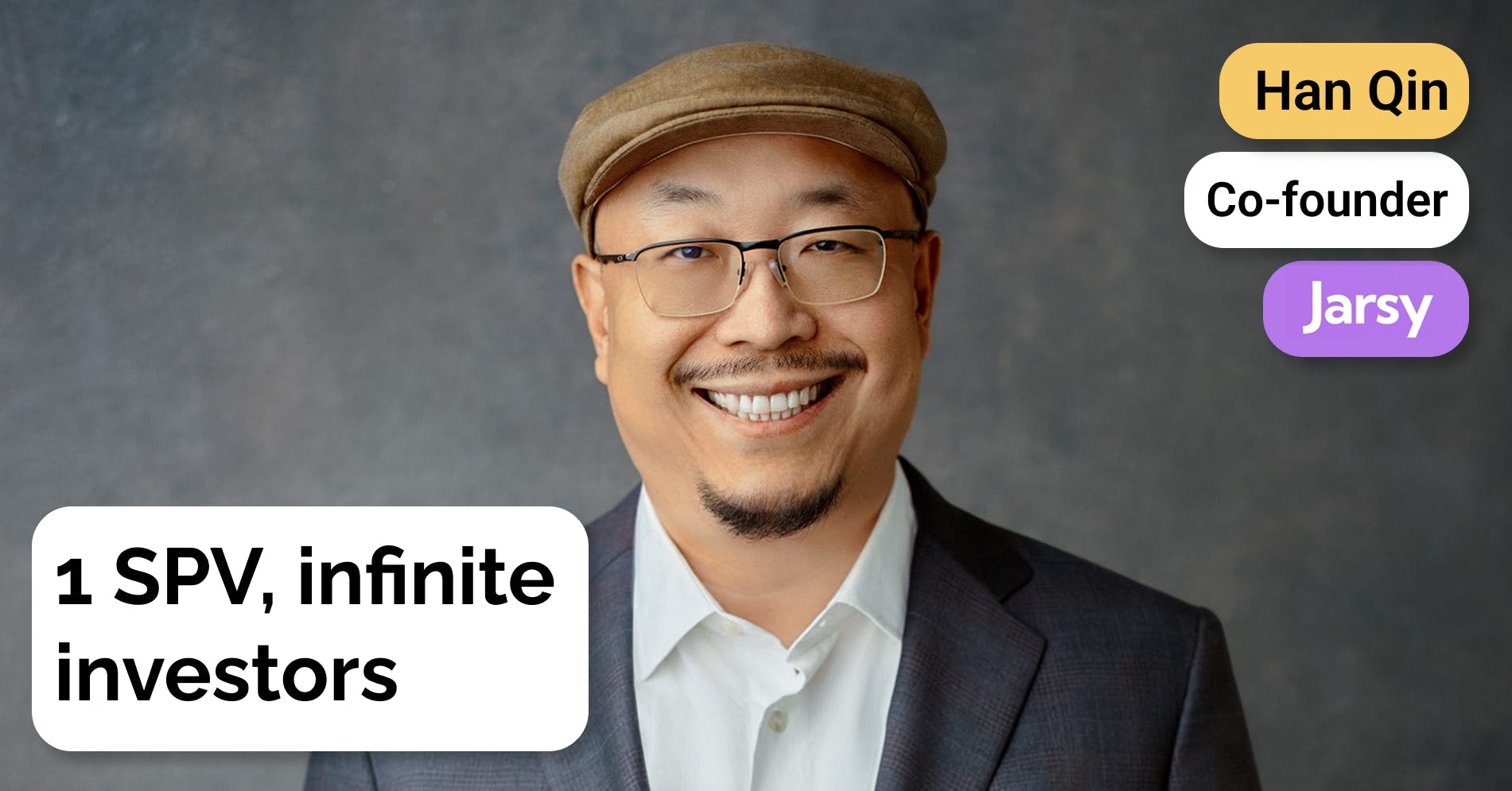Xavier Ekkel, founder of PreStocks, on 24/7 tokenized pre-IPO stock
 Jan-Erik Asplund
Jan-Erik Asplund

Background
Kraken and Robinhood’s simultaneous launches of tokens for public & private stocks on June 30th, followed a month later by Coinbase’s announcement of its own plans for tokenized stocks, come as the SEC and EU have both signalled a new openness to tokenized equities.
We reached out to Xavier Ekkel, founder of PreStocks ($2.1M seed, Republic Capital), a platform for tokenized pre-IPO stock, about where equity tokenization is headed.
Key points from our conversation via Sacra AI:
- The EU loosening restrictions on on-chain stock trading and the SEC signalling its new-found enthusiasm for tokenization, along with more consumer-friendly crypto wallet UX and now near-zero transaction fees on Solana & Ethereum, have kicked off the tokenization of equities—starting with public companies, with Coinbase & Kraken launching always-on, fractional blockchain versions of Apple and Tesla stock that can be traded 24/7 outside of the U.S. “In terms of regulations, especially recently, there has been a lot more endorsement of crypto and forward thinking around crypto… you have the SEC chairman endorsing tokenization and this innovation. There's a lot more openness to this, which makes projects feel safer in taking these new experimental pathways.”
- To tokenize private stock, a special purpose vehicle (SPV) buys up the underlying shares of e.g. OpenAI or Canva—or acquires an interest in an SPV that does—and then a blockchain token is issued that represents a proportional, non-voting interest in that SPV, enabling investors to get exposure to private stocks without needing issuer cap-table approval. “Because these tokens are inherently backed by SPV exposure, SPV-related complexities still exist. But they're abstracted away from the end users. . .We wanted to just represent the pure valuation if it were publicly tradable, essentially. You can get a real sense of—this is what it would be worth if it was trading publicly. Because it is essentially trading in real time.”
- With different approaches fragmenting along regulatory regimes and blockchains, Republic operates in the US under Reg CF rules that cap investments at $5K and enforce a year-long lockup, while in Europe, Robinhood’s tokens (under MiFID-II) trade only on Robinhood’s L2 blockchain and can’t be traded to other wallets or platforms, while PreStocks’s Solana tokens (under Reg S) can flow into any Solana exchange, wallet, or DeFi app. “[Regulations] are definitely the biggest constraint. But if there's enough movement in this area, and it's for the benefit, ultimately, of the end users, then we’ll see just what happened with Uber and Airbnb—they forced the regulations to change because it was so clearly beneficial for everyone.”
Questions
- Before PreStocks, you were a software engineer at Canva. Did your experience at Canva inspire you to start PreStocks?
- What is PreStocks in short?
- We've been hearing about tokenized public and private stock for awhile, but it feels like it's picked up a lot of steam recently. What's changed, what are the key enablers that will make this a reality?
- How important is the underlying protocol, e.g., Solana vs Ethereum vs Polygon vs something else, and how does that affect the investor experience? Why did you build PreStocks on Solana?
- What's essentially the same and different about tokenized private vs public stock?
- Secondary marketplaces have historically been sales driven, but your background is as a software engineer. How do you think about the role of sales vs product & engineering in building a marketplace for pre-IPO private stock?
- How do you think about handling ongoing cap‑table updates, disclosures, and corporate actions (e.g. splits, dividends, tenders) with tokenized stock?
- Are regulations the biggest constraint or bottleneck here?
- Robinhood's launch of tokenized private stock in OpenAI got some pushback from OpenAI. How do you read the importance of being issuer aligned and how do you drive that kind of alignment?
- How do you think about the market for PreStocks? Is it crypto investors? Is it public market investors who are looking for private markets exposure anyway they can get it?
- There's a growing stack of tokenized asset platforms from Backed to Synthetix, Ondo, Swarm, and Superstate. How do you place PreStocks in that universe—same user base, different instrument, or orthogonal?
- What kinds of companies are you seeing the most demand for tokenized exposure to—the biggest startups like OpenAI, earlier-stage breakout companies, or something else entirely?
- How do the approaches vary in terms of risk of being hacked / loss of customer funds? How should investors assess their risk?
- PreStocks isn't available in the U.S. How do you think about geographical markets for PreStocks? Do you intend to launch market by market? How do you intend to sequence them?
- Can you talk a bit about previous attempts to tokenizing equities and other assets?
- Do you see shorting as one of these compelling use cases that gets unlocked by tokenization of private stocks?
- If everything goes right for PreStocks over the next 5 years, what does it become and how is the world changed?
Interview
Before PreStocks, you were a software engineer at Canva. Did your experience at Canva inspire you to start PreStocks?
It did, actually. I was working there as a software engineer, and I obviously had some equity options. I was really bullish on their future success and around the same time, there were all these other IPOs happening that I wanted to get into as well. So I was trying to find a way to get more upside exposure to Canva and all these other pre-IPO companies.
But as a regular retail investor, there wasn't really any way for me to get access. I found it unfair that only those who were already wealthy and had special connections were getting access to these opportunities. But I wasn't allowed to invest even if I had early conviction.
Since I had been following crypto for a very long time—I've been following it since 2013—I thought there must be a way, using decentralized finance and on-chain rails, to allow me to build my own exposure to these private companies. That's where this project began. We've gone through many experimentations and different iterations to get where we are today. But the mission has always been the same, which is to democratize pre-IPO investing. Taking what was previously reserved for the wealthy and well-connected and instead allowing anyone to access these private market opportunities.
What is PreStocks in short?
PreStocks are tokens that track the valuation of individual pre-IPO companies. You can think of them as a digital wrapper over one or more SPVs that hold exposure to these private companies.
By 'tokenizing' this exposure, we unlock a tonne of new benefits. Tokens are fractionalizable, which means you can participate with no minimum investment, rather than needing six or seven figures per deal. Tokens are inherently borderless, which allows for broader participation, including from retail. Our tokens also abstracts away the complexities of private market investing, like deal sourcing, paperwork, and inconsistent fee structures, and makes the asset class more liquid and efficient by enabling instant 24/7 trading and real-time price discovery.
It also unlocks brand new use cases that don't really exist in private secondary markets, such as using your positions as collateral for loans, lending them out to earn interest, and trading with leverage.
So that's PreStocks in a nutshell—a digitized, modernized way to get exposure to the private markets.
We've been hearing about tokenized public and private stock for awhile, but it feels like it's picked up a lot of steam recently. What's changed, what are the key enablers that will make this a reality?
There are a number of factors here. Firstly, on the crypto side of things, the technology and UX has evolved quite significantly. In the past, it was really hard to onboard users into crypto, which was a big barrier to entry for people trying to use it for these real-world use cases. On top of that, blockchain transaction costs used to be very high, which inhibited a lot of trading activity, especially for smaller amounts. Now, apps hide most of the crypto complexity away and blockchain transaction costs have dropped to almost nothing, so from the user perspective, it feels like just a regular trading experience.
In terms of regulations, especially recently, there has been a lot more endorsement and forward thinking around crypto. You've even got figures like the SEC chairman calling tokenization an innovation that they want to embrace. So this makes tokenization projects like ours feel a lot more confident in taking these new experimental pathways.
How important is the underlying protocol, e.g., Solana vs Ethereum vs Polygon vs something else, and how does that affect the investor experience? Why did you build PreStocks on Solana?
For us, it’s all about maximizing distribution. The more people who can access and trade PreStocks, the more participation we get, which leads to higher volume and attracts more liquidity providers. More liquidity begets more participation, which begets even more liquidity. It’s a virtuous cycle that all comes back to distribution.
This is especially powerful for price discovery. In traditional private secondary markets, data is limited and fragmented, and the prices you do see are retrospective, since deals can take weeks or even months to close. With high participation and on-chain trading, we get real-time price discovery that simply wasn’t possible before.
That’s why we chose Solana: it leads in retail mindshare, it's home to the top on-chain trading apps, and it has the most users, liquidity, and trading volume—so it's the ideal environment for these network effects to grow.
What's essentially the same and different about tokenized private vs public stock?
On the public side, there are actually ways to do it where you do get direct ownership, so you don't need to go through SPVs. The benefit of tokenizing public stocks would be increasing access. Some people can't access these stocks, and tokenizing inherently makes it more globally accessible. Another aspect is making it tradable without market hour restrictions. So you can make it tradable 24/7 or at least increase the availability of after-hours trading.
And fractionalization as well. Instead of dealing with minimums, which are enforced by legacy systems, because it's all programmable and infinitely divisible, you can have any fractional amounts traded. Theoretically there are other use cases that can be unlocked, like borrowing and lending, because it's all just programmable infrastructure. Those would be the selling points for public stocks.
But one reason isn't for liquidity, because obviously public markets are already very deep in liquidity. It's not really a value-add to do it on-chain. They also can be traded fairly instantaneously already. So that's not really a value add to tokenizing public stocks.
If you compare it to private stocks, it's really a zero-to-one in terms of access for the large majority of investors. Most investors can't get access at all. Even if you can get access, there are very high minimums for these deals. They take an average of maybe eight weeks to close, lots of paperwork, which is very annoying to deal with.
There are privacy risks—you have to do KYC with every different counterparty that you work with. And then once you have the asset, you can't do anything with it and it's very hard to sell. There are all these inefficiencies that can be solved by just making it programmable and abstracting away all of those complexities. It's a real zero-to-one change in terms of access and also in terms of efficiencies and liquidity potential for tokenizing private versus public.
Also if you think about it, tokenization for private stocks is analogous to how some countries skipped over the desktop computer phase and leapfrogged straight to mobile adoption. It skips the outdated infra that runs public stocks today, and leapfrogs straight to the more modern approach.
Secondary marketplaces have historically been sales driven, but your background is as a software engineer. How do you think about the role of sales vs product & engineering in building a marketplace for pre-IPO private stock?
Actually, quite recently, we expanded our mission to be not just 'democratizing' but also 'modernizing' investing in pre-IPO companies. That's because it's one thing to have access to these opportunities, but then there are so many inefficiencies that we've identified that are being solved by this approach that we're taking, that we made that part of the mission as well.
What would a modern pre-IPO secondary market look like? It certainly wouldn't be the way it's done right now, which is human-led and manual. We think, just like how in public markets we take it for granted that they're highly automated and you don't have to deal with an individual person every time you want to make a trade, we think that's how private market trading should also be, and it feels like a no-brainer.
But there are some steps to get there. The tokenization approach that we're taking is all about automating and making everything interoperable and programmable so that we can get rid of all those things that were previously done completely manually.
How do you think about handling ongoing cap‑table updates, disclosures, and corporate actions (e.g. splits, dividends, tenders) with tokenized stock?
Because these tokens are inherently backed by SPV exposure, SPV-related complexities still exist. But they're abstracted away from the end users, so the end user doesn't have to deal with any of those aspects. It's all handled by the holding companies that have that real-world exposure. We're all about making things simpler. Those SPVs will still have to deal with those things, but the end user shouldn't have to deal with those things.
I did also want to mention, typically, when you're investing in these secondary markets for private companies, there's also quite a lot of complexity around fee structures. Everything is quite non-standard. You have non-standard terms. Each deal could have different fee structures, different conditions and so forth, which is obviously a lot of effort to understand each time. It takes time. But that also makes it harder to price because all these different deals have their own fee structures with performance-based or upfront-based, or maybe there's an expense fee or maybe there's some other weird combination.
That's another thing we're abstracting away. PreStocks inherently have no performance fee, no ongoing management fees, no annual fees. We wanted to just represent the pure valuation if it were publicly tradable, essentially. You can get a real sense of—this is what it would be worth if it was trading publicly. Because it is essentially trading in real time. You can get a better sense of the true value of these private companies.
Are regulations the biggest constraint or bottleneck here?
It is definitely the biggest constraint. But if there's enough movement in this area, and it's for the benefit, ultimately, of the end users, then I think we’ll see something just like what happened with Uber and Airbnb—they forced the regulations to change because it was so clearly beneficial for everyone.
Robinhood's launch of tokenized private stock in OpenAI got some pushback from OpenAI. How do you read the importance of being issuer aligned and how do you drive that kind of alignment?
If you can achieve alignment, obviously, that's nice. But realistically, that's not going to happen. Even in the existing private secondary markets, it's not like any of these companies are officially endorsing this activity. The activity still happens anyway. It'll continue that way because ultimately, we are just a wrapper over SPV exposure. The way it still happens in secondary markets will continue to exist that way.
Obviously, I would like to see that change over time as well—be made more transparent. Some risks could be reduced. Maybe there could be some light regulation there in the interest of reducing counterparty risk. But the companies themselves rarely will endorse this activity, it just happens anyway.
I also think it's great that Robinhood is experimenting with this despite some expected pushback. Like us, they see how valuable and important it is to make the private markets more accessible for the regular retail investor.
How do you think about the market for PreStocks? Is it crypto investors? Is it public market investors who are looking for private markets exposure anyway they can get it?
If you think about it top-down, you have all of the equity markets. Then a subset of that is private markets. Then a subset of that is the actual traded secondary markets of those private markets. And then within that is a very small but growing section of tokenized equities.
We're not really focused on leaping straight to the biggest market—like, "let's capture the entire private equities space"—because we know that the movement is towards tokenization. We know that the adoption of crypto rails is already happening and growing rapidly. So instead of trying to circumvent that, we just focus on maximizing our distribution via crypto, which we know is growing anyway. If we just keep focused on that segment, we grow with that segment.
There's a growing stack of tokenized asset platforms from Backed to Synthetix, Ondo, Swarm, and Superstate. How do you place PreStocks in that universe—same user base, different instrument, or orthogonal?
There aren't any others on Solana doing private stocks. The way that real-world assets have evolved in crypto is it started with very safe stuff, like stablecoins, which is starting to be recognized now by regulators. But before that it still existed for a long time without any clarity. Then the next step that was taken were on-chain T-bills, which is also pretty safe. Then they slowly started adopting more asset classes like real estate and public equities.
The next step after public equities is private equities. So we're a few steps ahead there. But it's inevitable that this is where everything is moving.
What kinds of companies are you seeing the most demand for tokenized exposure to—the biggest startups like OpenAI, earlier-stage breakout companies, or something else entirely?
If you just look at—there is some public info about this—the top five names dominate more than half of all of the secondary market activity. We really want to focus on what we call pre-IPO companies, so at least unicorns. It's quite different in the past year because you have a lot of companies that are raising even seed rounds that already have a valuation in the billions. So it's pretty crazy there. It's not like you could call them late-stage, because they literally just started. But it's more about where is the money flowing, where is the attention? What are most people hyped about? What do people recognize? Those are the names that we focus on. If people want to see more of certain names, then we prioritize those names.
The key thing here is that all of these new technologies that are emerging—unless it's a subset of a really big company like Google—they're all in the private markets. If you want to be accessing and investing in these exciting new technologies, it's all in the private markets. There's a lot of AI of course, but you'll also see technologies like quantum computing and gene editing and nuclear energy and drones and robotics. All these companies are evolving in the private markets.
How do the approaches vary in terms of risk of being hacked / loss of customer funds? How should investors assess their risk?
It completely depends on what you want. Because at the end of the day, PreStocks are tokens. Different apps will have different security approaches. Some people care more about being self-custodial and managing their own keys and all of that, and you can do that if you want to.
But also, if you don't care so much about that—well, most of these apps are self-custodial anyway, but some of them have some level of centralization. Maybe there's a way to recover via a centralized party, or maybe it relies more on email rather than just purely holding private keys, for example. So it's really up to you.
If you don't like a particular approach, the good thing with crypto is you can just withdraw it and take self-custody of it yourself. You're not tied to any one platform. You can move it around freely. That's one of the great benefits of crypto.
PreStocks isn't available in the U.S. How do you think about geographical markets for PreStocks? Do you intend to launch market by market? How do you intend to sequence them?
We're not in the US and not in any country that is sanctioned by major economic regions. There are some other exclusions as well. In general, within the bounds of any local regulations, our goal is to make PreStocks as broadly accessible as possible.
Can you talk a bit about previous attempts to tokenizing equities and other assets?
There was one very significant example. It was called Mirror Protocol. It was associated with Terra Luna, which collapsed quite spectacularly. But the approach taken there was essentially over-collateralization. Well, actually, Mirror was for public stocks, not private stocks. But the approach in the past for a lot of these things was over-collateralization. Essentially you're range-bound, so you're trading these things and someone has taken the other side, essentially going short on these assets and being liquidity providers so that this trading can occur.
They have to be compensated pretty heavily, given the volatility of these assets and the tendency to go up. I don't think that approach works. Most of those over-collateralization approaches have been abandoned. The natural conclusion is that you have to have real exposure to the assets so that you can have this uncapped upside without needing to be over-collateralized and essentially go short on an asset.
Do you see shorting as one of these compelling use cases that gets unlocked by tokenization of private stocks?
That's where it's going to evolve. The number one thing is being able to buy. The next most important thing is being able to sell it without a significant lockup or delay. We support both of those. The next step after that is probably being able to borrow against it. So you can still hold your long position, but do what all the rich people do. When they have a huge stock portfolio, they can just borrow against it. We want to unlock that use case for private markets.
After that is going short, which means lending out these assets and earning yield on them for one side and then for the other side, being able to go short on these private companies. This hasn't really been possible to date. But that also feeds into better price discovery. Because if you can only go long or sell what you already have, you're limited in the accuracy of the pricing that you see. But if you can suddenly go short, then a whole new type of trader can come in and adjust the prices to what they think it should be.
If everything goes right for PreStocks over the next 5 years, what does it become and how is the world changed?
In the best-case scenario, this gets a lot of traction and becomes valuable enough for people to not ignore it. Then it ignites some change in how the current private markets work. So essentially making the private markets more like public markets. Not the same burden on the companies themselves, but making them more liquid, more transparent in terms of pricing, and more accessible for everyday investors. People will realize there's not really any reason that we should be preventing people from accessing these opportunities.
But it’s not just about access—the modernization side is just as important. If everything goes right, we’ll be replacing outdated, manual processes with automated, on-chain infrastructure. Pricing becomes real-time, trading is 24/7, and assets are programmable and interoperable with the rest of the financial world. So we'll not only be democratizing access, but also setting a new standard for how pre-IPO markets work in the modern era.
Disclaimers
This transcript is for information purposes only and does not constitute advice of any type or trade recommendation and should not form the basis of any investment decision. Sacra accepts no liability for the transcript or for any errors, omissions or inaccuracies in respect of it. The views of the experts expressed in the transcript are those of the experts and they are not endorsed by, nor do they represent the opinion of Sacra. Sacra reserves all copyright, intellectual property rights in the transcript. Any modification, copying, displaying, distributing, transmitting, publishing, licensing, creating derivative works from, or selling any transcript is strictly prohibited.










